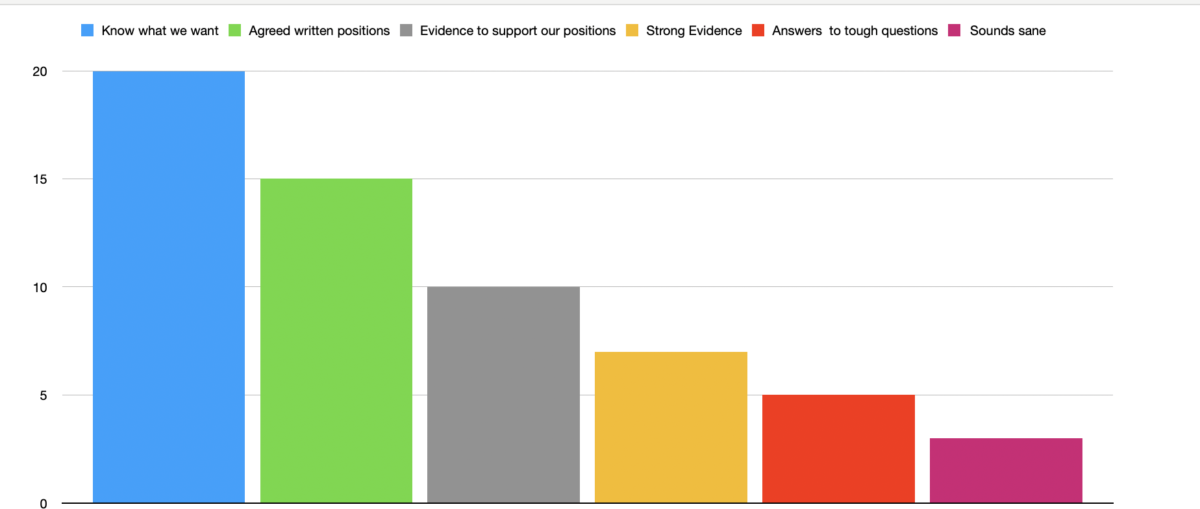Lobbying is hard because you’ll often start off with high hopes of a strong case and find it whittled down.
This is an important, if somewhat painful process to go through.
If you just go out the door, after a liberating exercise in group think (usually in an internal meeting), you’ll find yourself confronted with realtiy. Your lobbying efforts will often be dead on arrival (DOA) on day 1.
The ideal for any group (industry or NGO) is to go through an exercise that goes through steps 1 to 6, and eliminates all points that do not meet all points.
- Know what we want
- Have agreed positions that are written down
- Have evidence for those positions
- You have strong evidence
- You have good answers to the invetiable difficult questions that politicians, the press and officials will throw at you
- And, finally, your answers sound sane in public

The process of culling is a painful one. As you can see from the table above, it involves leaving aside many of your favourite points.
You should not be surprised if the 20 points a group feel passionate about – say 20 – often leads to 3 or so strong points that you can use in public and meetings with officials, politicians and the press.
The weighting below – shown in the chart – is realistic.
- Know What we want – 20
- Have agreed positions that are written downn
- Have evidence for those positions -10
- You have strong evidence – 8
- You have answers to the invetiable difficult questions – 5
- Where our answers sound sane in public – 3
If you are brave enough to go out the door with positions where there is no evidence to back your position, or it comes from sources like Facebook University gradudate school, don’t be surprised when you don’t land up getting what you want.